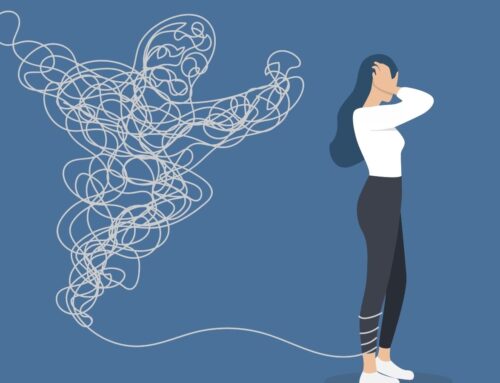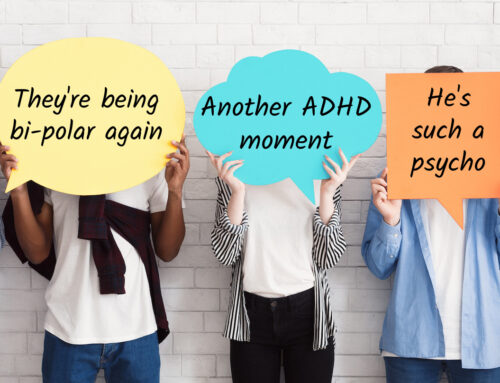Last week’s post was about family cohesion and two weeks ago we talked about the primary and secondary emotions. This week’s post brings the two worlds together.
Remember the primary emotions?
They were made up of a set of six basic emotions (joy, fear, sadness, disgust, surprise, and anger. Did you know that these emotions are considered universal? That’s right — it doesn’t matter what culture you are raised in, everybody’s face does some version of the same thing when these emotions are felt. It’s as if the way our facial muscles respond to these feelings is coded in our DNA.
Accompanying the facial expressions are tiny little universally made gestures. A few of these are the shoulder shrug, the eyebrow flash, the slumpy head hang, and the clenched jaw. (These aren’t the clinical terms for these gestures.)
All together (along with cues you’ve learned from growing up in a specific cultural context) and you have a lot to go off of — a neurotypical* brain is basically sorting through all these cues, rapidly comparing them to the situation’s context to give you a feeling that you can instantaneously “read” a person’s “vibes.”
Feelings are contagious.
But, then, these little things called mirror neurons light up in our brain. Within milliseconds of seeing another person’s emotions (not even long enough for you to consciously register what you’ve seen) mirror neurons turn on and start activating your body to “mirror” the other person. If the person you see is happy, your own smile muscles subtly twitch and pull into an imperceptible smile. If they’re angry, then mirror neurons tell your eyebrows to knit ever so slightly. But we’re doing more than just understanding when these neurons turn on, we’re reflecting (like a mirror) the emotions and that makes us “catch” the feelings!
This is called emotional contagion. Emotional contagion is a superpower — it helps us connect with one other, build solidarity, form communities, generate empathy, and even communicate without having to say a word. It’s fantastic to catch happiness, excitement, and joy; it’s less fantastic when we catch sadness, fear, or frustration.
Here’s where the family cohesion comes in.
When one member of your household is experiencing sadness, anger, or annoyance, are you doomed to “catch” these feelings as well? Not necessarily. Instead, you can train yourself to notice when you start mirroring and investigate the feeling. Here are three options:
- Train to Reframe
We know that getting angry at someone who is angry at us or hurt by someone who is hurt by us isn’t the productive thing to do, but it’s hard to help! (That’s because of those mirror neurons.)
When someone is shining an uncomfortable emotion in your direction, rack your brain for some way in which the person could actually be giving you a compliment in disguise! Yes, this is silly sounding, but it’s proven to work.
For example, imagine your loved one shares their hurt with you — dig for the compliment. How wonderful is it that they want a relationship with you so much that an uncomfortable confrontation is worth it?
- Practice “Sayback.”
When you notice that someone’s emotions are jumping from them to you, give a voice to what is happening by verbally reflecting what you notice. Careful not to attack someone for ruining your lovely afternoon with their sour mood. Instead, go for a neutral tone: “It’s really subtle but I feel like I notice frustration from you; am I right?” (Notice how that differentiates from “Wow, you’re angry aren’t you?” By using the word “subtle” and the phrase “I feel” you have a better chance that the person will open up).
You can also try naming your experience, as in: “I feel myself reacting to your anger but I’m really trying to hear what you’re telling me. What I hear is…” Repeating back what you hear your loved one saying is a bonus trick. It switches your focus off of your own reaction (which the mirror neurons are kicking up) and on to the hard work of understanding the words being said to you.
- Don’t Wait to Seek Help.
If you’re catching moods left and right and unable to shake them off, that’s not uncommon! To be human is to feel. Especially during these trying times, when it has been hard to find time and space to unwind, our nervous systems are particularly easy to agitate. Luckily, plenty of research-based techniques exist to help you navigate the mercurial waters of emotions. If you or a loved one is having a hard time regulating your emotional response to those around you, talking to a professional can offer valuable support.
*Neurodiversity means that there are many types of brains. Some brains have a hard time identifying and labeling the emotions of others, some brains are slower to respond to mirror neurons, and some brains are hypersensitive to emotional contagion. Whatever brain you or your loved one has, first know that all are wonderful. A world without neurodiversity would be boring and stagnant, indeed.






